Optic Neuritis Steroid Treatment
Optic neuritis steroid treatment. However there is controversy surrounding the acceptable routes of administration dosage and course of treatment. If needed treatment for optic neuritis is a combination of high dose intravenous via a drip followed by oral tablet steroids. These trials compared corticosteroid treatment with placebo or another treatment.
Study characteristics For this systematic review we identified six trials conducted in Denmark Germany India Japan United Kingdom and United States which included 750 participants. Improvement can continue over many months. Subsequent studies have further clarified the role of corticosteroids in the treatment of acute optic neuritis.
In acute inflammatory optic neuritis ON as a typical onset of multiple sclerosis MS only few studies have investigated plasma exchange PLEX as a sequential treatment after insufficient response to high-dose intravenous glucocorticosteroids. There is little controversy over the practice of using steroids in the treatment of optic neuritis--it is well established that intravenous steroid treatment can speed visual recovery but does not alter final visual function. Prognostic concerns in patients with optic neuritis are visual recovery recurrence of optic neuritis and risk of multiple sclerosis MS.
Recovery of vision Without treatment vision begins to improve after a few weeks 5. Corticosteroids have been widely used in the treatment of optic neuritis due to their anti-inflammatory effects. Acute demyelinating optic neuritis which presents with loss of vision and painful eye movements is common in multiple sclerosis MS occurring 50 of persons with MS.
CRION is a recurrent steroid dependent optic neuritis without evidence of any additional neurological deficits sarcoidosis or systemic autoimmune diseases. Azathioprine cyclosporine and antimetabolites eg. 1 Does treatment with either oral prednisone or intravenous methylprednisolone followed by.
This multicenter randomized clinical trial supported by the National Eye Institute was designed to answer the following questions. High-dose intravenous corticosteroids IVCS were established as the standard of treatment for acute optic neuritis via the Optic Neuritis Treatment Trial ONTT with its first findings published more than 20 years ago. Objective To determine whether recovery of vision following treatment of acute optic neuritis with a high-dose IV corticosteroid is superior to that with a bioequivalent dose of an oral corticosteroid.
Steroids are typically injected into your numbed affected eye so they can reach the optic nerve. The etiologies of optic neuropathy include inflammation ischemia toxic and metabolic injury genetic disease and trauma.
Kidd et al in their report of 15 patients described a syndromic presentation of subacute optic neuropathy prominent pain prompt response to systemic corticosteroids and relapse on.
Steroids are typically injected into your numbed affected eye so they can reach the optic nerve. Conventional optic neuritis treatment typically includes. 90 percent have 2040 or better vision at one year. High dose 1g corticosteroids administered through an IV became the standard of practice after the landmark Optic Neuritis Treatment Trial as IV administration. High-dose intravenous corticosteroids IVCS were established as the standard of treatment for acute optic neuritis via the Optic Neuritis Treatment Trial ONTT with its first findings published more than 20 years ago. Kidd et al in their report of 15 patients described a syndromic presentation of subacute optic neuropathy prominent pain prompt response to systemic corticosteroids and relapse on. Treatment with intravenous corticosteroids ie SoluMedrol helps reduce the risk that a patient with Optic Neuritis will develop MS within two years. However there is controversy surrounding the acceptable routes of administration dosage and course of treatment. In acute inflammatory optic neuritis ON as a typical onset of multiple sclerosis MS only few studies have investigated plasma exchange PLEX as a sequential treatment after insufficient response to high-dose intravenous glucocorticosteroids.
Subsequent studies have further clarified the role of corticosteroids in the treatment of acute optic neuritis. High-dose intravenous corticosteroids IVCS were established as the standard of treatment for acute optic neuritis via the Optic Neuritis Treatment Trial ONTT with its first findings published more than 20 years ago. This multicenter randomized clinical trial supported by the National Eye Institute was designed to answer the following questions. Subsequent studies have further clarified the role of corticosteroids in the treatment of acute optic neuritis. High dose 1g corticosteroids administered through an IV became the standard of practice after the landmark Optic Neuritis Treatment Trial as IV administration. There is little controversy over the practice of using steroids in the treatment of optic neuritis--it is well established that intravenous steroid treatment can speed visual recovery but does not alter final visual function. In acute inflammatory optic neuritis ON as a typical onset of multiple sclerosis MS only few studies have investigated plasma exchange PLEX as a sequential treatment after insufficient response to high-dose intravenous glucocorticosteroids.


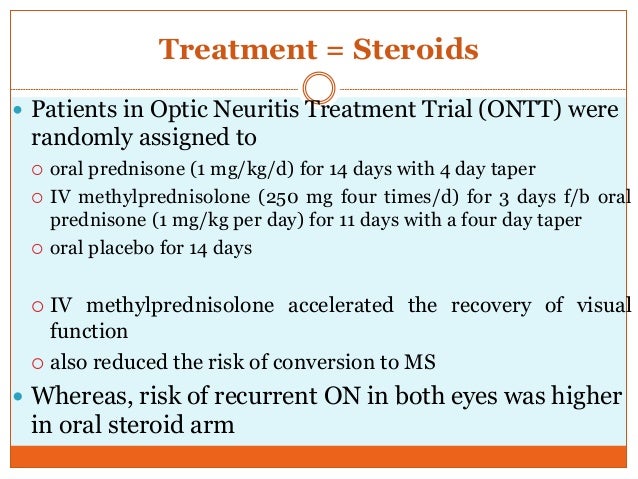

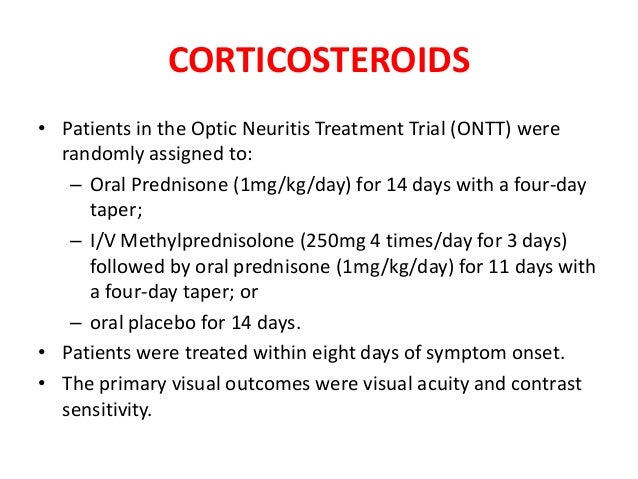


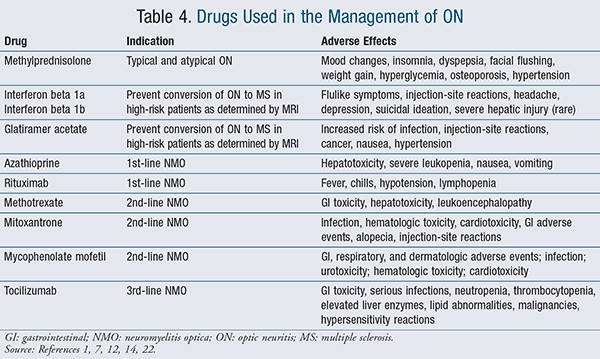

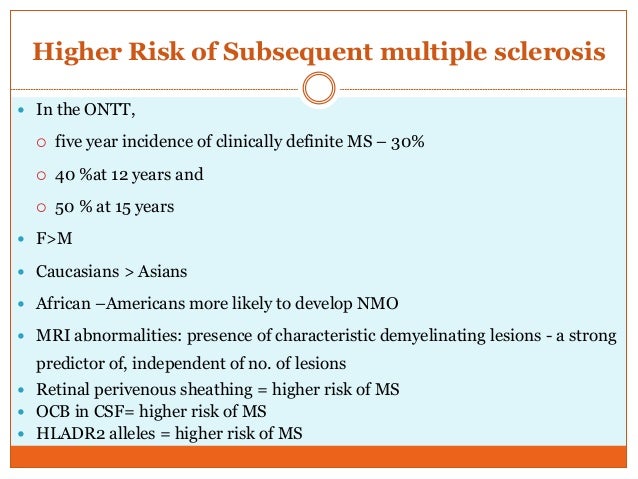




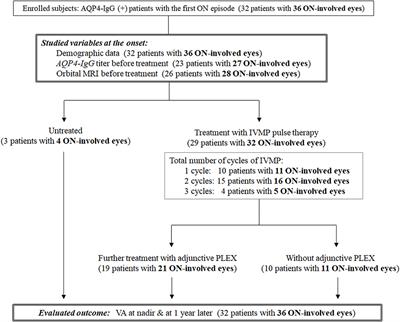
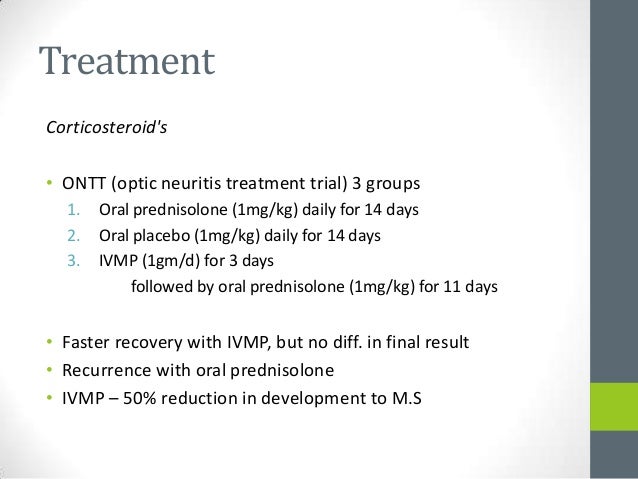





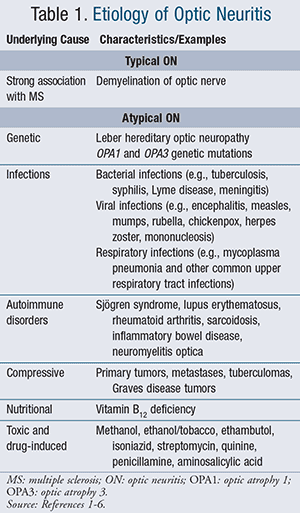







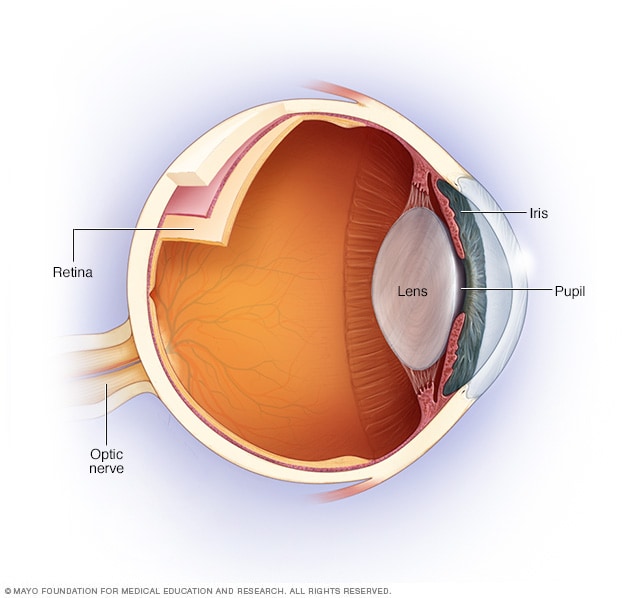
/optic-neuritis-multiple-sclerosis-symptom-2440807_v2-4193b934b27d43ac834a7518181aa96e.png)
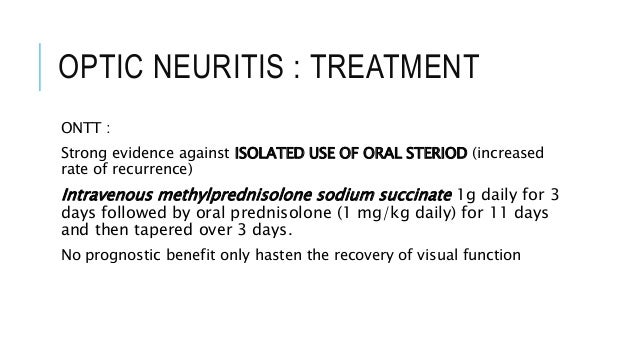
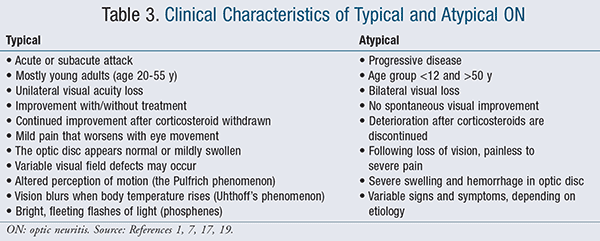

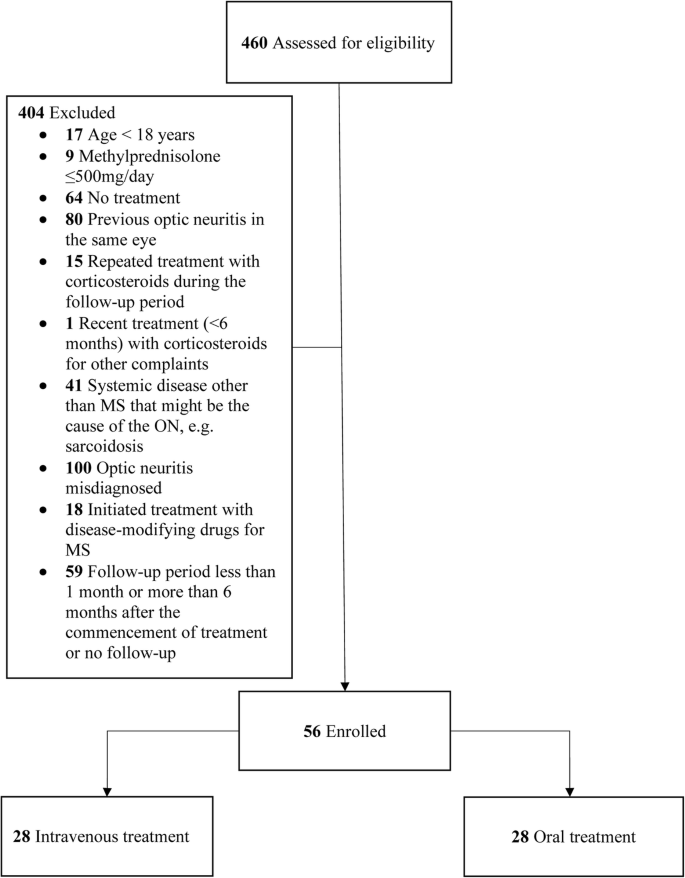

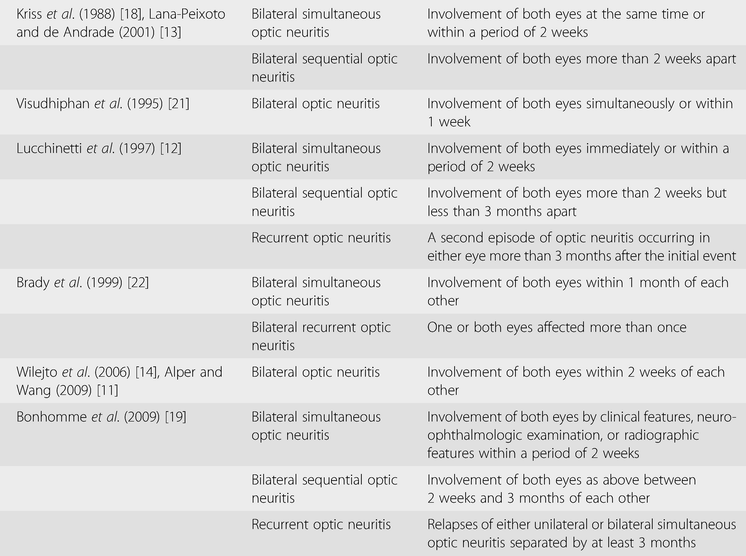


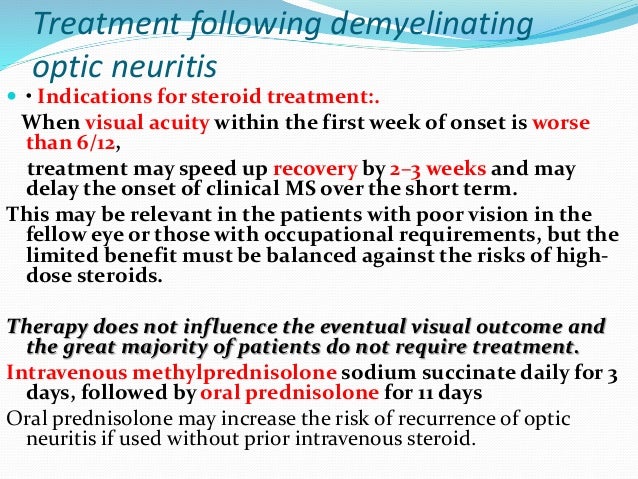



Posting Komentar untuk "Optic Neuritis Steroid Treatment"